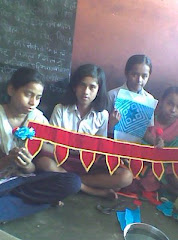In 1970, a young community health physician, Saroj Pachauri in her PhD thesis focused on low birth weight, which was a major cause of death among infants in India at that time. Thirty per cent of all babies born then had low birth weight. Today, the figure remains the same and low birth weight continues to be a major cause of death among infants.
Decades of various family planning and welfare programmes have not been able to give our babies a better start in life. Of all infant deaths, 65 per cent occur in the very first month, and majority of them are babies with low birth weight. It becomes very tough to save them in the sub-optimal conditions of our rural health centres, if they reach there at all.
Dismal picture
The health of the Indian women is among the worst in the world. A recent World Bank report put the figure of anaemic and undernourished girls in India at 300 million and women at 30 million. This should jolt a country to remedial action.
Poverty, poor infant feeding practices, neglect of the girl child and social customs like eating after the men and the boys have been fed, leave the females undernourished. When under and malnourishment is coupled with early marriage as over 50 per cent of Indian women marry before they reach 18 years, it spells danger, especially during childbirth.
A recent study puts the maternal mortality figure at 254 per 1,00,000 live births. Infant mortality, defined per 1000 live births, is at 53. Both the figures, though improved over the last few decades, are still extremely high. A real shame! For a country, which attracts people from around the world for complicated medical procedures, cannot save its own women and babies. India’s maternal mortality ratio is 16 times higher than Russia, 10 times that of China and four times that of Brazil.
Both the babies and the mothers die largely from the same factors – apart from poor hygiene, lack of adequate newborn and maternal care. Low birth weight predisposes them to complications and death from malaria, pneumonia, and diarrohea.
Bihar, Madhya Pradesh, Rajasthan, Uttar Pradesh, Orissa, West Bengal and Assam contribute 75 per cent of all infant deaths in the country. Maternal mortality figures are high among, what are now termed as the Empowered Action Group states - Bihar, Madhya Pradesh, Rajasthan, Uttar Pradesh, Orissa, Jharkhand, Uttaranchal, Chhattisgarh and Assam.
Schemes don’t reach out
India has been dispensing iron and folic acid tablets to the pregnant women for decades and dishing out meals to its school going children. For the last 40 years, the Integrated Child Development Services (ICDS) scheme has been running. However, these schemes have had only limited success. One of the criticisms against ICDS was that it failed to reach the very vulnerable 0-3 year age group, in any significant way. By then, under-nourishment had done its harm.
The upcoming Fourth National Family Health Survey will reveal just how well the efforts at improving the health of women and children have been. Since the third survey in 2005-06 the National Rural Health Mission and the Janani Suraksha Yojna (JSY) have been launched, entailing large-scale employment of resources, human and monetary, like never before.
In 2005, JSY, the biggest cash transfer scheme ever, was launched. It aimed at getting the women to deliver at a medical centre, as opposed to home, so that they and the newborn could get timely medical attention. Initial studies show that women have started going to institutions for delivery, but they are being discharged within a few hours, so that they become eligible to receive the Rs 1400. Health scientists point out that woman and her baby need to be under medical care for at least 48 hours. The neonatal period is a critical time and many infants and their mothers could be saved.
Interviews by the writer in Uttar Pradesh villages revealed that people are happy with the cash amount they get, at times given after a mandatory ‘cut’ to the ‘authorities’. But it is not being spent on food for the mother; instead it goes towards buying household items. Even the National Rural Health Mission, which has improved the demand for public health facilities, has not been able to check infant mortality rate in any substantial way.
The results of NFHS 3 have been disappointing. Around one third of the women were having their first child while still in their teens. The risk of low birth weight and neo natal mortality increases when the woman is an adolescent. The Indian Council of Medical Research has found maternal mortality among adolescents to be as high as 645 per 100,000 live births.
Think beyond numbers
In 1983, the National Health Policy had expected to reach the replacement level total fertility rate (TFR) of 2.1 per cent by 2000. TFR is calculated as the average number of children a woman will have in her lifetime. But by 2000, we were nowhere near. However, the year saw the establishment of a new National Population Policy and the goal of 2.1 TFR was extended to 2010. Today ten states – Bihar, Madhya Pradesh, Rajasthan, Uttar Pradesh, Jharkhand, Chhattisgarh, Meghalaya, Arunachal Pradesh, Nagaland and Dadra and Nagar Haveli have TFR between 3.0 and 3.9. Demographers now predict that the near replacement TFR is still some decades away. The US Census Bureau calculates a fertility rate of 2.2 by 2050! By then, we would have become the most populous country in the world with numbers that could range from 1.5 billion to 1.8 billion, overtaking China in 2030.
We will soon have the largest ever generation of adolescents. They can be a ‘demographic dividend’ only if they are healthy. But a half of India’s children today are moderately or severely malnourished.
What is more, most Indian children suffer from at least one micronutrient deficiency. Over 75 per cent of preschool children suffer from anaemia and almost 60 per cent have sub-clinical Vitamin A deficiency. Progress in reducing the prevalence of micronutrient deficiencies in India has been excruciatingly slow. Child morbidity and mortality is higher for girls aged one month to 5 years than for boys, as the girls receive less food and health care. It is a vicious cycle—an undernourished girl will grow up to be unhealthy and give birth to low weight babies.
In 1994, some health scientists brought out a book – “Listening to Women Talk About their Health”. It featured health studies from different villages and slums of India and made a strong case for population-based studies on women’s health instead of hospital/clinic ones to get a better picture so that better policies can be framed and their needs addressed. For often poor women do not, or to put it better, cannot access the health system. Therefore, listen to what they are saying, what they want from a health system.
Some health scientists have been critical of India’s obsession with numbers, i.e. population control, and not focusing enough on women’s health and well being. At the end of it all – a healthy woman means a healthy baby. And a healthy and an educated woman means a healthier child and adult. Forty years down the road, Dr Pachauri, now heading Population Council of India, is saying the same thing: Improve the health of the women if you want to save the babies.
The above article by me appeared in The Tribune on July 12, 2011.









.jpg)





+(2).jpg)

